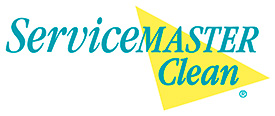
Snowfall can quickly transform neighborhoods into a peaceful and scenic winter wonderland. But while these landscapes look beautiful, snow can damage your property, especially since there are limits to the amount of snow your roof can support.
Simple snowflakes are harmless, but accumulated snow is extremely heavy, and can lead to significant issues like roof leaks, interior water damage, ice dams and even roof collapse. The disaster restoration experts at ServiceMaster By Mason have some helpful tips to show how much snow your roof can handle and how to clear your roof safely and efficiently this winter.
How Much Snow Is Too Much?
According to the Insurance Institute for Business and Home Safety, most residential roofs (in good condition) can support up to 20 pounds per square foot of snow. To help determine when snow on your roof is approaching this weight limit, use these guidelines:
Freshly Fallen Snow: Four feet of fresh snow = 20 pounds per square foot
Old Packed Snow: Two feet of old, packed down snow = 20 pounds per square foot
Mix of New & Old Snow: Two to three feet of both new and old snow = 20 pounds per square foot
Unfortunately, if your roof is flat, then it is more susceptible to a collapse from the total combined snow weight. This is due to melted water having a higher chance of refreezing before it can run off, like it would on a sloped roof. If your home has a flat roof, you’ll want to take steps to frequently remove the snow to prevent structural damage from occurring.
Remove Snow Safely With These Tips
When the snow on your roof accumulates faster than it can melt, it needs to be cleared off. If you plan to remove the snow yourself, consider these safety precautions to protect yourself and your roof:
Removing Snow Can Prevent Water Damage
New England weather can be unpredictable, and often winter storms create more snow than your roof can handle at once. Regularly removing snow on top your roof can help you prevent roof collapse and roof leaks, and filing an insurance claim. A leaky roof can lead to costly water damage cleanup, damaged wood beams and building materials in your home, and also harmful mold. If you experience an unexpected snowfall and a leaky roof, the professionals at ServiceMaster By Mason are available 24/7 to help with residential water damage restoration services. Our experienced team will assess the situation to develop a comprehensive restoration plan and work fast to restore your home as quickly as possible. Contact ServiceMaster By Mason to learn more.




